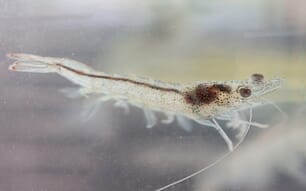The methods behind aquaculture slaughter and the issues of welfare associated with them are set to become the next big thing in the world of fishing and aquaculture. A number of charities are also becoming increasingly concerned with the impacts that such techniques can have on animal welfare and are releasing a series of recommendations in an attempt to address them.
Slaughter Methods
The methods of slaughter traditionally used in aquaculture can largely be divided into two main types; those causing the immediate loss of sensibility and those that achieve this in a slower way. The first of these two methods is preferred in terms of both animal welfare and meat quality.
Of those methods that cause the slow loss of sensitivity, the most commonly used techniques include:
- asphyxiation - both in air and ice
- decapitation (eels)
- electrical immobilisation
- the use of salt or ammonia baths (eels)
- carbon dioxide narcosis
- the process of exsanguination, or blood loss
- evisceration of live fish
For all the above mentioned techniques, recent guidelines on aquatic animal treatment by the World Organisation for Animal Health (2011) stated that they result in poor fish welfare.
The decapitation of fish, for example, commonly used in the treatment of eels, is known to take between 13-30 minutes to cause the loss of brain function, whilst the evisceration of live fish is thought to take even longer, with death occurring between 20-40 minutes, depending on the species.
The use of electrical immobilisation is also thought to be just as inhumane. The treatment is known to cause paralysis, pain and exhaustion of animals. The process of blood loss is similarly considered cruel.
Death by carbon dioxide application is also thought to be very aversive. A number of species, including carp, trout, eels and salmon, are known to make vigorous attempts to escape during the process. So much so, the use of carbon dioxide to stun fish has consequently been banned in Norway since 2008.
In a comparative situation, the use of salt or ammonia baths is also thought to be similarly punishing. Once commonly used, the technique has now been banned in Germany.
Methods causing the immediate loss of sensibility in contrast are much more preferred for their increased humanity and animal treatment. For that reason, they are now the recommended practices of all fish welfare groups.
The most ethical of those techniques is the process of electrical stunning. For this method, an adequate current passes through the water causing death almost automatically – this is a distinct contrast to the often drawn-out and painful techniques highlighted above.
The process of percussive stunning is also favoured as a manual or automatic blow to the skull causing death instantaneously and with, generally, the fish only being out of the water for around 10 seconds, substantially reducing stress and fear.
For the slaughtering of larger fish like tuna or salmon, the process of spiking or shooting can also be used; again both techniques are greatly preferred in terms of welfare recommendations as they give instant death if done properly.
Meat Quality
The type of slaughtering method not only affects welfare, it also impacts the quality of the flesh. A number of recent reports have found fish meat quality and taste to be noticeably reduced when animals are stressed prior to and during death, making the meat less appealing to the consumer.
October 2013




